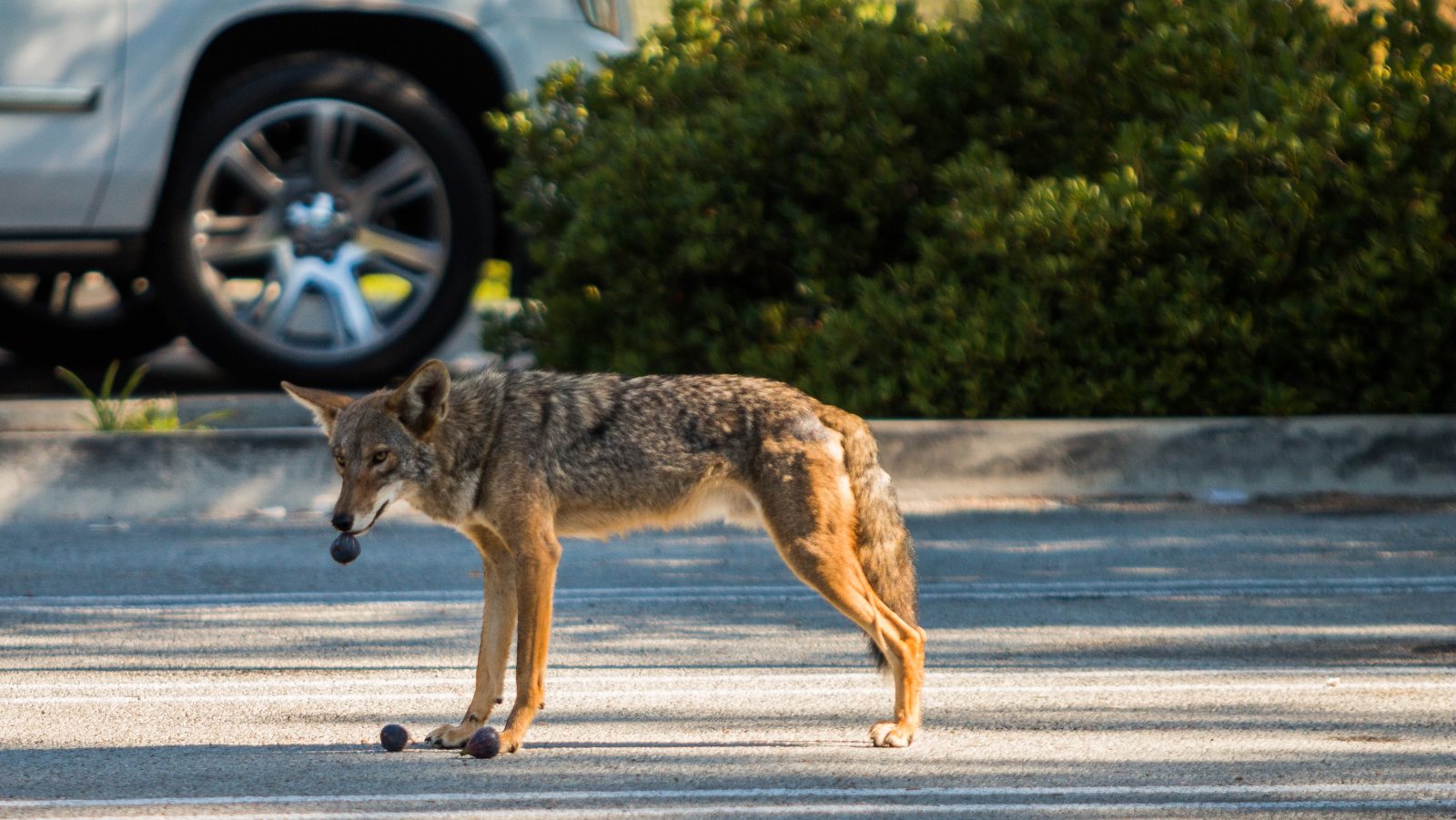Science
Research Reveals New Insights on Urban Coyotes and Public Safety

The growing presence of coyotes in urban areas has prompted significant research efforts to understand their behavior and the potential risks they pose to residents. In 2009, researcher Colleen Cassady St. Clair observed an increase in coyote sightings within urban neighbourhoods, particularly in areas previously deemed less hospitable to these animals. This led to the establishment of the Edmonton Urban Coyote Project, developed in partnership with the City of Edmonton and Animal Damage Control, to study the species and mitigate human-wildlife conflicts.
St. Clair, a professor in the Faculty of Science at the University of Alberta, aimed to gather more information about urban coyotes to understand the sources of conflict and devise strategies for coexistence. She noted, “Coyotes are a really interesting example of an animal that adapts well to urban living,” adding that the insights gained could also inform conservation efforts for species that struggle in urban settings.
The project initiated a community-based hazing program, designed to empower residents with tools and knowledge to promote coyote wariness. Hazing, a wildlife management technique, involves creating loud noises and throwing objects to scare animals away. St. Clair emphasized that effective hazing requires consistent practice to help coyotes associate human presence with negative experiences.
Recognizing the need for broad community involvement, St. Clair, along with collaborator Howard Harshaw and master’s student Gabrielle Lajeunesse, mobilized 120 volunteers from 71 neighbourhoods across Edmonton. The volunteers underwent training to identify “bold” coyotes, defined as those that approached humans closely during the day. Equipped with sand-weighted tennis balls and distance-measuring cards, they logged over 1,300 hours of surveillance during two field seasons.
The results were revealing. Volunteers reported only 175 coyote sightings, indicating that close encounters are less frequent than commonly perceived. Throughout the two-year hazing program, only 23 coyotes were deemed bold enough to warrant hazing. In most cases, simply holding up the distance-measuring card effectively encouraged coyotes to leave the vicinity.
St. Clair highlighted the importance of these findings: “These results underscore the fact that it’s really rare to see a coyote in close range in a residential area during the day, the circumstance that creates the most concern. And when that occurs, it’s easy to intimidate them.”
Participants in the program expressed a sense of empowerment through their involvement. One volunteer from Rossdale, a neighbourhood with a high frequency of coyote sightings, noted a significant change in her attitude. After successfully employing hazing techniques during a coyote encounter, her initial fear dissipated. “A lot of the information campaigns assert that you don’t need to be afraid of coyotes, but this approach provides experiential learning, allowing people to see for themselves that they need not fear these animals.”
While the emphasis of the program has been on preventing physical confrontations, St. Clair pointed out a more pressing concern related to coyote interactions. Coyotes can carry a strain of tapeworm known as Echinococcus multilocularis, which is highly virulent for humans. Over the past twelve years, 35 Albertans have been diagnosed with this dangerous parasite. The microscopic eggs shed in coyote scat can easily travel via wind, water, or other animals, posing a hidden threat in urban environments.
Research indicates that approximately 65 percent of tested coyotes in Edmonton have been found positive for this parasite. St. Clair emphasized the need to manage coyote presence near areas frequented by children, such as playgrounds and community gardens, to minimize health risks. She noted, “I don’t think we’re going to get rid of coyotes, but it is realistic to have coyotes and people somewhat segregated and to minimize coyote presence in areas where people spend a lot of time.”
Although the low-intensity hazing study has concluded, St. Clair continues to encourage residents to haze coyotes when they encounter them in residential areas. She is collaborating with the City of Edmonton to implement a new high-intensity hazing program aimed at areas experiencing persistent coyote conflicts. Additionally, her PhD student Sage Raymond is conducting research on coyote cognition, exploring how these animals overcome their natural fears to adapt to urban environments.
As cities continue to expand into natural habitats, understanding and managing wildlife interactions will be essential for public safety and conservation efforts. The Edmonton Urban Coyote Project serves as a model for other urban areas facing similar challenges, demonstrating that informed community engagement can lead to more harmonious coexistence with wildlife.
-

 Science2 months ago
Science2 months agoToyoake City Proposes Daily Two-Hour Smartphone Use Limit
-

 Health2 months ago
Health2 months agoB.C. Review Reveals Urgent Need for Rare-Disease Drug Reforms
-

 Top Stories2 months ago
Top Stories2 months agoPedestrian Fatally Injured in Esquimalt Collision on August 14
-

 Technology2 months ago
Technology2 months agoDark Adventure Game “Bye Sweet Carole” Set for October Release
-

 World2 months ago
World2 months agoJimmy Lai’s Defense Challenges Charges Under National Security Law
-

 Technology2 months ago
Technology2 months agoKonami Revives Iconic Metal Gear Solid Delta Ahead of Release
-

 Technology2 months ago
Technology2 months agoSnapmaker U1 Color 3D Printer Redefines Speed and Sustainability
-

 Technology2 months ago
Technology2 months agoAION Folding Knife: Redefining EDC Design with Premium Materials
-

 Technology2 months ago
Technology2 months agoSolve Today’s Wordle Challenge: Hints and Answer for August 19
-

 Business2 months ago
Business2 months agoGordon Murray Automotive Unveils S1 LM and Le Mans GTR at Monterey
-

 Lifestyle2 months ago
Lifestyle2 months agoVictoria’s Pop-Up Shop Shines Light on B.C.’s Wolf Cull
-

 Technology2 months ago
Technology2 months agoApple Expands Self-Service Repair Program to Canada









